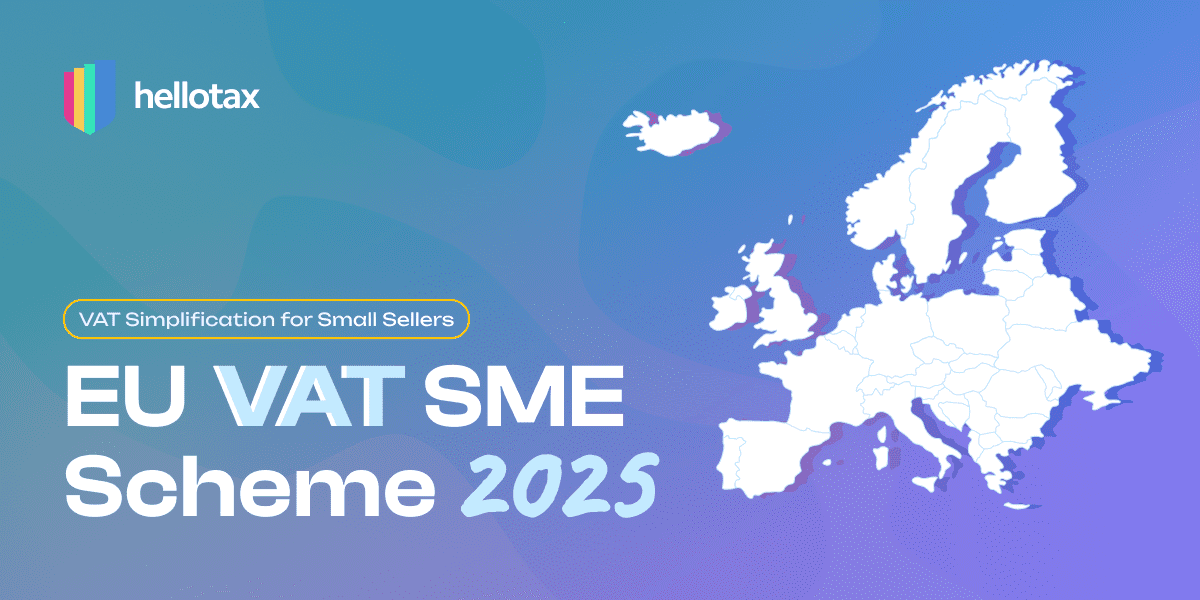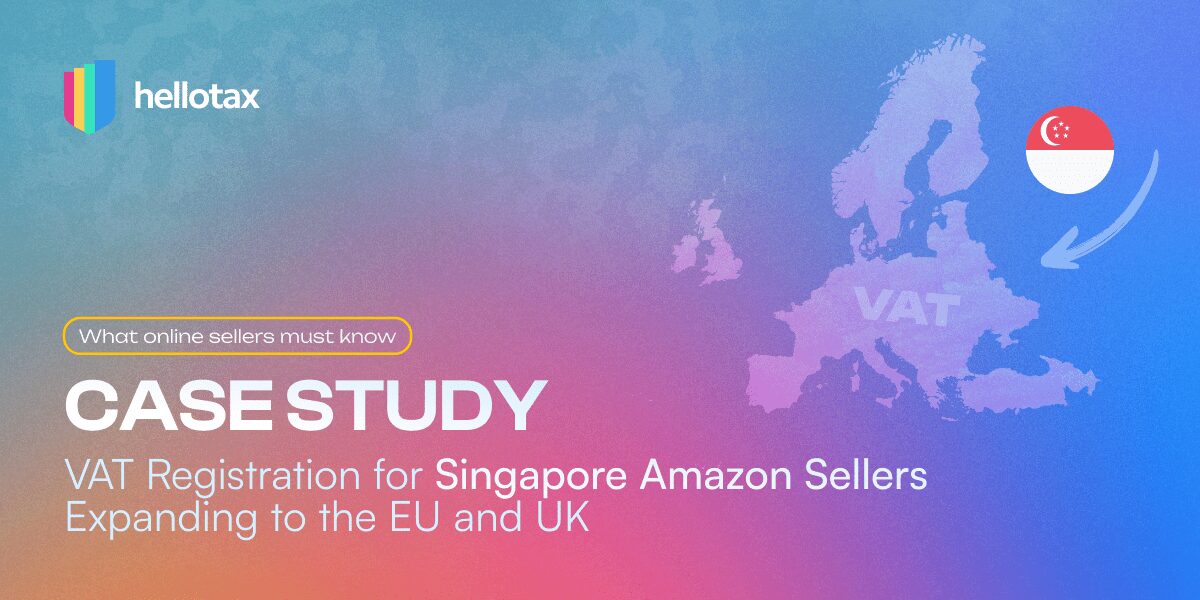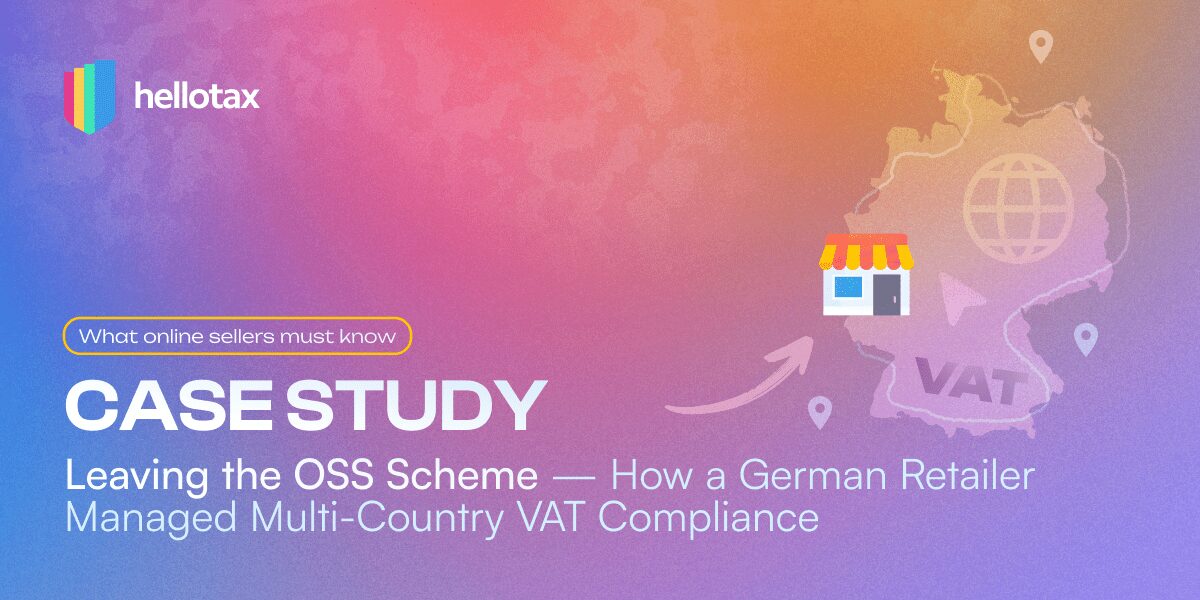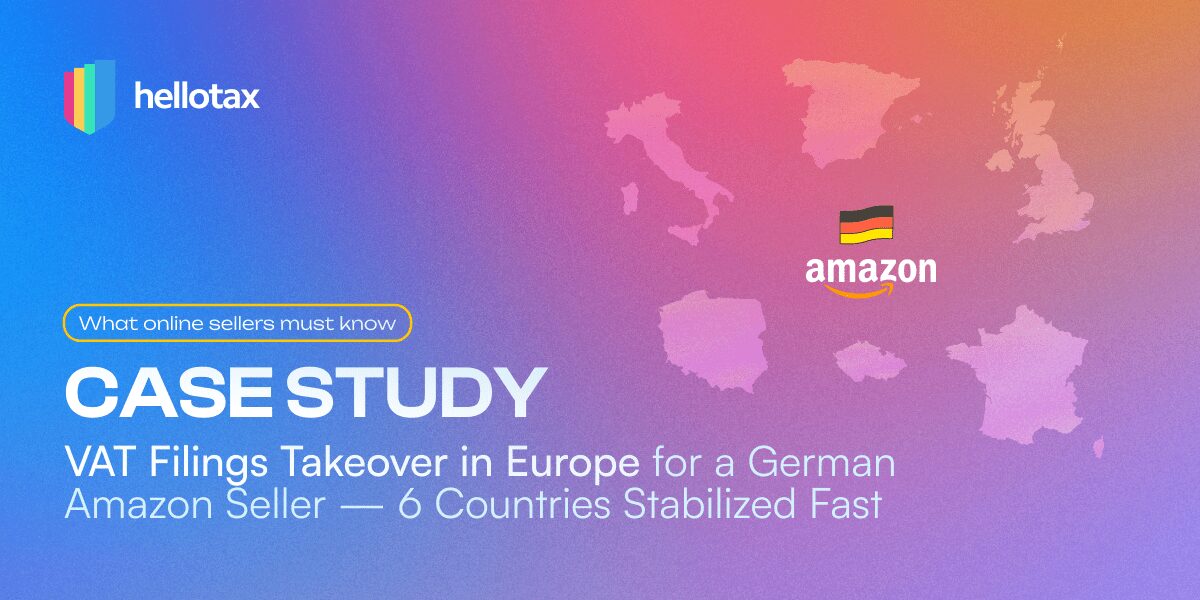Estonia’s new VAT rules mean many e-Residency companies no longer get EU VAT IDs. Learn about what Estonia e-residency VAT change means and how hellotax can help you stay compliant.
Brenda Varela
Last Updated on 17 October 20251. What Changed: What Changed: Estonia e-Residency VAT Rules in 2025
In August 2025, Estonia e-Residency VAT rules changed, introducing new substance requirements for companies applying for VAT IDs.
Under these rules, e-Residency companies without clear economic activity in Estonia—such as local clients, suppliers, or a physical office—may no longer receive an EU VAT number.
For digital nomads and remote entrepreneurs, this shift has major consequences. Many had relied on Estonian OÜs (private limited companies) for easy EU access and cross-border invoicing. Without a VAT ID, these structures can no longer invoice EU clients or register for payment processors like Stripe or Paddle.
2. Background: Why e-Residency Was Popular for VAT
For years, Estonia’s e-Residency program offered a fast, fully online way to set up a company in the EU.
Owners could manage the business remotely, reinvest profits tax-free until distributed, and register for VAT within Estonia—perfect for digital nomads and remote sellers.
Before the update, the Estonia e-Residency VAT registration process was straightforward and popular among digital nomads. Most e-Residents received it automatically during registration, even without physical presence in Estonia.
However, since 7 August 2025, the Estonian Tax and Customs Board (ETCB) now requires proof of “economic connection” to Estonia before granting a VAT number.
👉 For a practical overview of VAT registration requirements, see EU VAT Registration Explained.
3. Estonia e-Residency VAT Rules: Economic Substance Is Now Key
Under the revised Estonia e-Residency VAT guidance, companies must now prove economic activity in Estonia to qualify. According to Estonia’s updated guidance, companies must now show:
-
Clients or suppliers in Estonia, or
-
Physical presence (e.g., office, warehouse, or staff), or
-
Management decisions or operations taking place in Estonia.
Businesses that cannot prove this may have their VAT registration denied or revoked.
This means that many digital-only Estonian companies—especially those managed abroad—are treated like non-EU entities for VAT purposes. They may need to register for VAT in another EU country instead, depending on where their customers are located.
👉 Understand how these changes affect cross-border reporting with our guide to One-Stop-Shop (OSS).
4. What Estonia e-Residency VAT Changes Mean for Online Sellers
For Amazon sellers, Shopify merchants, and digital nomads, losing an Estonian VAT ID can have serious implications:
-
❌ No valid EU VAT number → invoices to EU clients become non-compliant.
-
⚠️ Inability to register on major marketplaces (e.g., Amazon, eBay, or Etsy).
-
🧾 Double registration requirements across several EU countries.
-
📉 Risk of delayed payouts or account suspension on e-commerce platforms.
In practice, this means that running an online business solely through an Estonian OÜ is no longer practical unless you have genuine activity within Estonia.
5. What Sellers Can Do Now
If your company is affected by the new Estonia e-Residency VAT rules, review your setup and seek expert support early:
-
Review your current VAT setup.
Check whether your Estonian VAT number is still valid. -
Assess your “economic connection.”
Do you have clients, staff, or assets in Estonia? If not, expect challenges. -
Register for VAT in the correct EU country.
If your customers are based in France, Germany, or Spain, local VAT registration may now be required. -
Consider fiscal representation.
Non-EU companies often need a fiscal representative to manage VAT locally.
👉 Learn more in our guide on Fiscal Representation in the EU.
6. How hellotax Can Help
At hellotax, we simplify VAT compliance for international sellers by providing:
-
🌍 Multi-country VAT registrations for EU and UK markets.
-
⚙️ Automated VAT filings and real-time compliance monitoring.
-
📨 A Tax Letter Inbox for communication with local authorities.
-
👩💼 Fiscal representation in countries where it’s mandatory.
Whether you’re an Amazon seller from Asia or a remote entrepreneur managing EU sales, our automated tools and expert support help you stay compliant—without the headaches.
👉 Book a free consultation to get a personalized VAT compliance roadmap.
7. External Resources
For Estonia’s official position, consult the
Estonian e-Residency VAT Guide
published by the Estonian Tax and Customs Board (ETCB).
This document outlines the criteria for VAT registration and explains how to determine where your VAT liability lies.

Book a free consultation
Our VAT experts are happy to help you. Book a free consultation today!
8. Key Takeaway
Estonia’s new approach to VAT registration marks the end of automatic VAT IDs for digital-only e-Residency companies.
If you run an Estonian OÜ but operate remotely, your business may now be treated as a non-EU entity for VAT purposes.
To keep selling legally in the EU, ensure your VAT registration reflects where your customers are—and let hellotax handle the complexity.
👉 Stay ahead of regulatory changes with hellotax’s automated VAT solutions.
Don’t let new Estonia e-Residency VAT rules disrupt your business.
Our experts at hellotax can register your VAT numbers, file your returns automatically, and act as your fiscal representative across Europe.
📅 Schedule your free consultation today and stay compliant from day one.







Leave a Reply